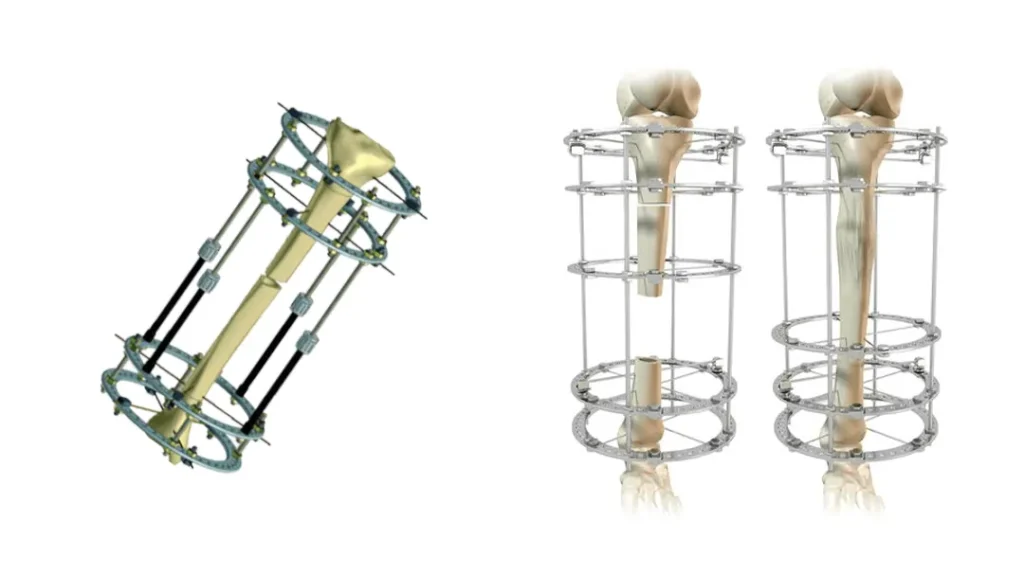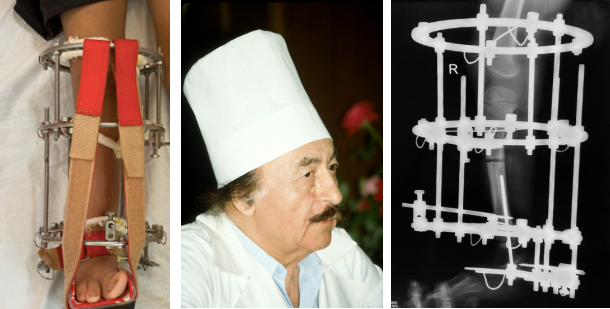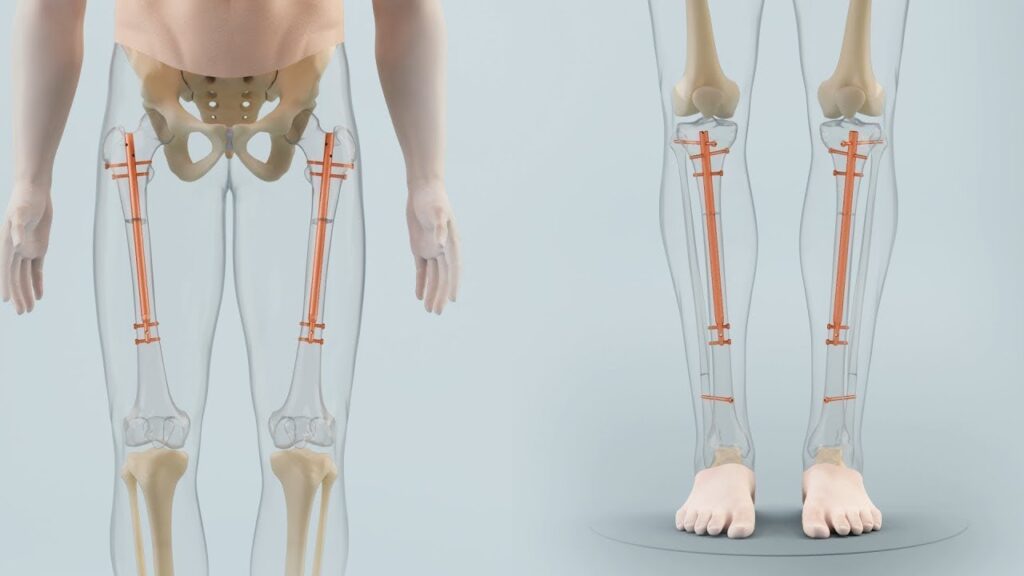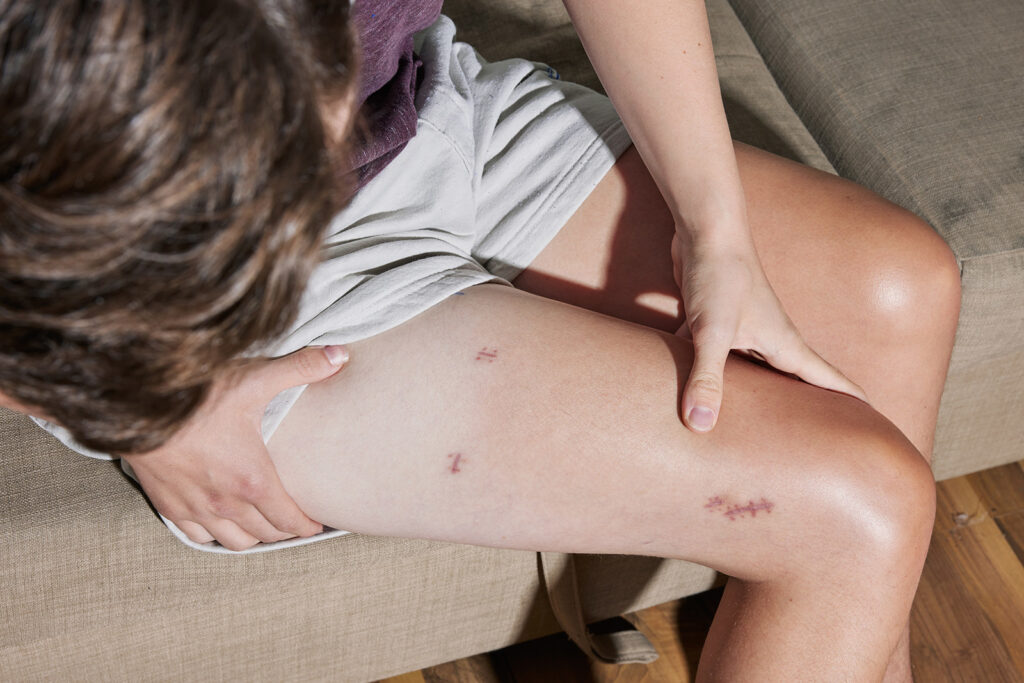Introduction of External Fixation Devices
Limb lengthening surgery is a complex procedure often necessary for patients with limb length discrepancies due to congenital deformities, injuries, or diseases. One of the most critical components of this surgery is the use of external fixation devices. These devices play a vital role in stabilizing and gradually lengthening bones, offering patients a chance for improved function and quality of life. This article delves into the intricacies of external fixation devices in limb lengthening surgery, highlighting their importance, types, benefits, and the overall process involved.

Understanding Limb Lengthening Surgery
Limb lengthening surgery involves cutting the bone and slowly separating the ends to allow new bone to form in the gap. This process, known as distraction osteogenesis, requires precise control and stabilization, which is where external fixation devices come into play.
What Are External Fixation Devices?
External fixation devices are medical apparatuses attached to the bone through pins or wires, extending outside the body to provide stability during the bone healing process. These devices are adjustable, allowing for controlled lengthening of the bone.
Types of External Fixation Devices
Monolateral Fixators
Monolateral fixators are applied on one side of the limb and are relatively simple to use. They are often chosen for their ease of application and patient comfort.
Circular Fixators
Circular fixators, such as the Ilizarov apparatus, surround the limb and offer multidirectional support. These are versatile and can be used for more complex deformities and lengthening procedures.
Hybrid Fixators
Hybrid fixators combine features of monolateral and circular fixators, providing the benefits of both systems. They are used in cases requiring more flexible stabilization.
The Procedure of Limb Lengthening with External Fixation Devices
Pre-Surgical Planning
Pre-surgical planning involves detailed imaging and analysis to determine the exact placement and type of fixator required. This step is crucial for ensuring successful outcomes.
Surgical Application
During surgery, the bone is cut (osteotomy), and the external fixator is attached. The device stabilizes the bone and allows for gradual lengthening.
Post-Surgical Adjustments
Post-surgical care includes regular adjustments to the fixator to slowly increase the length of the bone. This phase requires careful monitoring by the medical team.
Benefits of External Fixation Devices in Limb Lengthening
Precision and Control
These devices allow for precise control over the lengthening process, reducing the risk of complications.
Versatility
External fixators can be adjusted to correct various deformities and discrepancies, making them suitable for a wide range of cases.
Promotes Natural Healing
By providing stability, these devices enable the natural bone healing process, leading to stronger and healthier bone formation.
Challenges and Considerations
Infection Risk
The insertion points for pins and wires can become infected, necessitating careful hygiene and monitoring.
Patient Discomfort
Wearing an external fixator can be uncomfortable and may impact the patient’s daily activities.
Length of Treatment
The lengthening process is slow, often requiring months of adjustment and monitoring.
Recovery and Rehabilitation
Physical Therapy
Physical therapy is crucial for maintaining joint flexibility and muscle strength during the lengthening process.
Regular Follow-Ups
Frequent medical check-ups ensure that the lengthening is progressing as planned and that any complications are addressed promptly.
Technological Advances in External Fixation Devices
Computer-Assisted Devices
Modern fixators can be adjusted with computer assistance, improving precision and reducing manual error.
Smart Fixators
These devices incorporate sensors and digital monitoring, allowing for real-time adjustments and better patient outcomes.
Patient Stories and Success Rates
Many patients have experienced significant improvements in their quality of life following limb lengthening surgery with external fixators. Success rates are high when procedures are performed by experienced surgeons and followed by diligent post-operative care.
Comparing External Fixation Devices with Internal Methods
While internal methods like intramedullary nails offer certain advantages, external fixators remain preferred for their adjustability and versatility, especially in complex cases.
The Cost of External Fixation Devices
The cost of these devices can be high, but many insurance plans cover limb lengthening procedures. Financial planning and consultation with insurance providers are recommended.
FAQs
What are the main types of external fixation devices used in limb lengthening?
Monolateral, circular, and hybrid fixators are the primary types used, each offering different benefits depending on the complexity of the case.
How long does the limb lengthening process take?
The process can take several months, with the bone lengthening at a rate of approximately 1mm per day.
Are there risks associated with using external fixation devices?
Yes, risks include infection at pin sites, discomfort, and the need for careful monitoring to ensure proper lengthening.
Can external fixation devices be used for children?
Yes, these devices are often used in pediatric cases to correct congenital or acquired limb discrepancies.
What is the recovery process like after limb lengthening surgery?
Recovery involves physical therapy, regular follow-ups, and gradual adjustment of the fixator. Full recovery can take several months to a year.
How do external fixation devices promote bone healing?
They stabilize the bone while allowing for gradual separation, which encourages new bone formation in the gap created.
Conclusion
External fixation devices are indispensable in the field of limb lengthening surgery, offering precision, versatility, and effective bone stabilization. Despite challenges like infection risk and patient discomfort, the benefits far outweigh the drawbacks, making these devices crucial for successful limb lengthening outcomes. With ongoing technological advancements, the future of limb lengthening surgery looks promising, providing hope and improved quality of life for patients with limb discrepancies.



